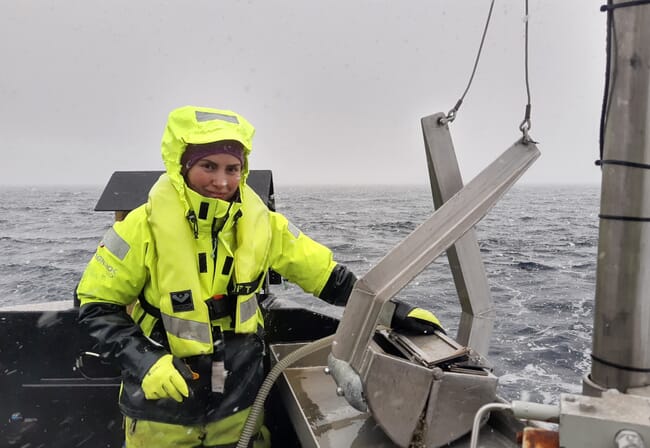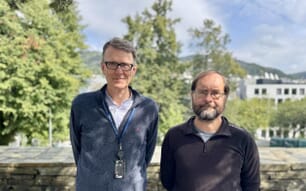
The researchers took sediment samples to test for EMB © Carl Ballantine/Akvaplan-niva
A recent collaborative project involving researchers from the non-profit aquatic research institute Akvaplan-niva and the Norwegian Institute for Water Research (NIVA) has investigated the environmental risks of an innovative delousing method, comparing it to traditional techniques.
Currently EMB - an anti-louse medicine - is administered to salmonids via solid feed pellets - a technique which is relatively successful in encouraging uptake by the fish, but which leaves a lot to be desired in terms of environmental impact. Uneaten feed sinks to the seafloor below and adjacent to salmon pens where EMB can persist for months, or even years, with potentially negative effects on the benthos.
The project - dubbed POSITIV OPDPRIFT - tested the potential of liquid medicine pellets with positive buoyancy to reduce the volume of EMB settling to, and persisting in, the seafloor. Instead of sinking, the pellets which remain uneaten following the treatment simply float at the surface where they can be collected and disposed of responsibly.
The researchers conducted large-scale field trials at two aquaculture sites in Norway, with fish being treated with EMB over a period of 10 days, either with sinking feeds or the innovative floating feed. At the same time, field studies were carried out to measure the concentrations of EMB in water and sediment samples around the aquaculture sites. Sampling was carried out before, during and again after the feeding experiment.
High EMB levels, exceeding the allowable limits for Scotland, were found for all sites, with high levels also found in the surrounding seafloor. However, the concentrations of the chemical found in the sediment were up to 50 percent lower at the floating feed cages, compared with the sinking feed site.
Whilst still resulting in EMB levels higher than those permissible in Scottish waters, the study showed the potential of the innovative application method for reducing EMB pollution. The researchers highlight that, as the levels of the chemical were still high when using the new approach, more research and further mitigation is needed to address this.




